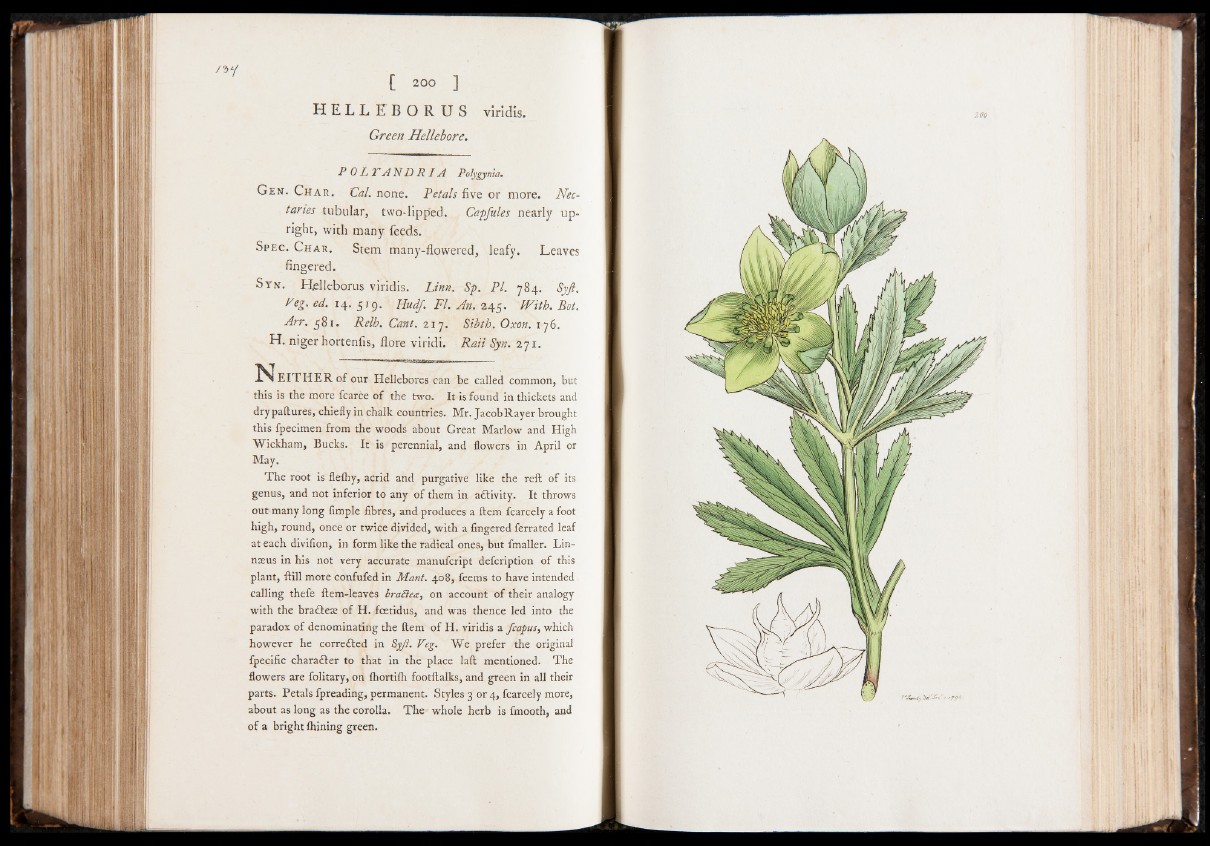
HEL L EB O R U S viridis.
Green Hellebore.
/ s y
P 0 L V A N D R I A Polygynia.
Gen. Char. Cal. none. Petals five or more. Nectaries
tubular, two-lipp'ed. Capfules nearly upright,
with many feeds.
Spec. Char. Stem many-flowered, leafy. Leaves
fingered.
Syn. Helleborus viridis. Linn. Sp. PI. 784. Syfl.
Veg. ed. 14. 519. Hudf. FI. An. 245. With. Bot.
Arr. 581. Relh. Cant. 217. Sibth. Oxon. 176.
H. niger hortenfis, fiore viridi. Ran Syn. 271.
---------■ — 1-----------------------rrfrrfim —..... - N E ITH E R of our Hellebores can be called common, but
this is the more fcarce of the two. It is found in thickets and
dry paftures, chiefly in chalk countries. Mr. JacobRayer brought
this fpecimen from the woods about Great Marlow and High
Wickham, Bucks. It is perennial, and flowers in April or
May.
The root is flefliy, acrid and purgative like the reft of its
genus, and not inferior to any of them in a&ivity. It throws
out many long Ample fibres, and produces a ftem fcarcely a foot
high, round, once or twice divided, with a fingered ferrated leaf
at each divifion, in form like the radical ones, but fmaller. Linnaeus
in his not very accurate manufcript defcription of this
plant, ftill more confufed in Mant. 408, feems to have intended
calling thefe ftem-leaves braStea, on account of their analogy
with the bra&ese of H. foetidus, and was thence led into the
paradox of denominating the ftem of H. viridis a fcapus, which
however he corrected in Syfl. Veg. We prefer the original
fpecific character to that in the place laft mentioned. The
flowers are folitary, on fhortilh footftalks, and green in all their
parts. Petals fpreading, permanent. Styles 3 or 4, fcarcely more,
about as long as the corolla. The whole herb is fmooth, and
of a bright fhining green.